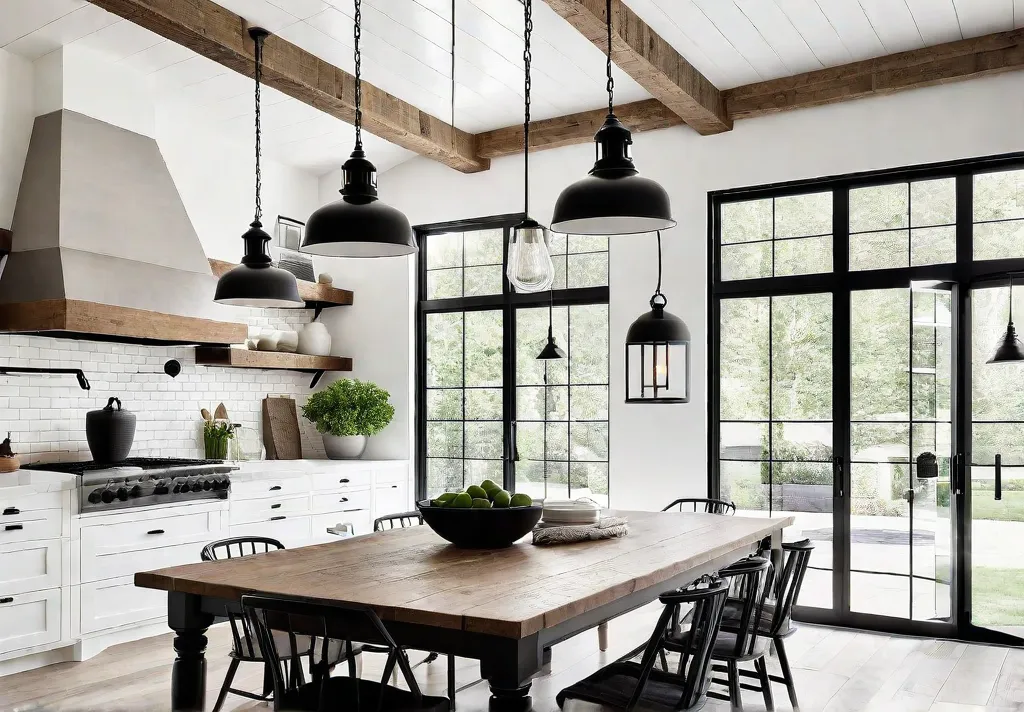Dearest readers, can you imagine stepping into a kitchen where the lighting caresses every surface with a warm, inviting glow? A space where the ambiance instantly transports you to a charming Southern parlor, inviting you to linger over a leisurely meal or spirited conversation? As a true connoisseur of traditional design and Southern hospitality, I’m delighted to guide you through curating the perfect lighting for your kitchen table area.
Whether hosting an intimate dinner party or simply savoring a quiet evening at home, the right lighting can elevate your culinary experiences. Imagine the soft candlelight dancing across your heirloom china or the warm glow of a statement chandelier casting a welcoming embrace over your gathering. With thoughtful touches, you can transform your kitchen table from a functional surface into a captivating centerpiece that exudes timeless elegance and gracious charm.
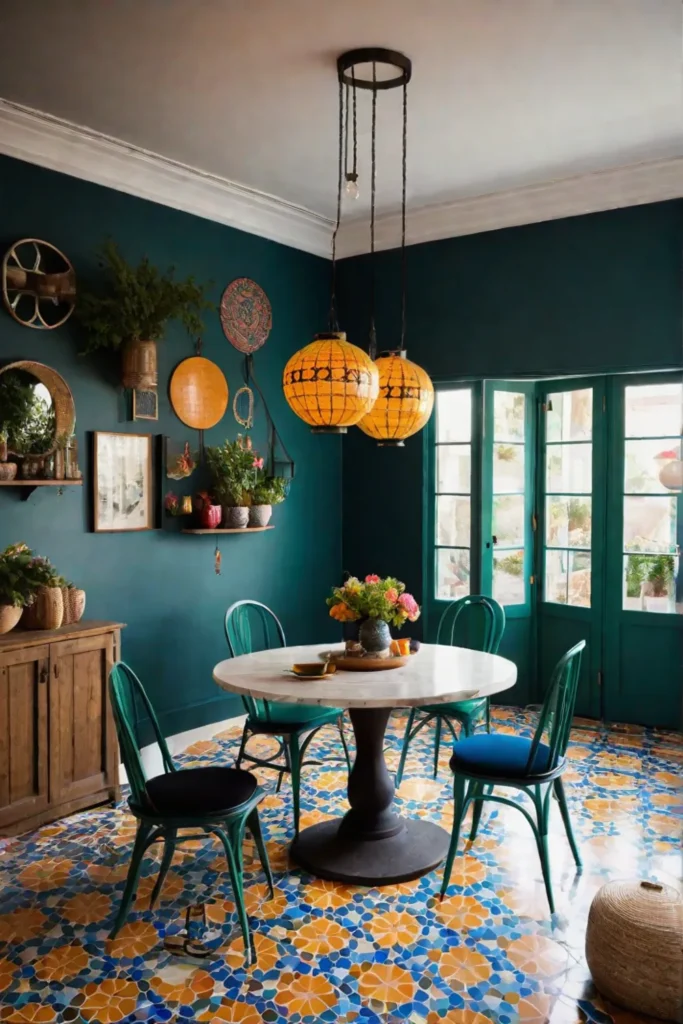
So, let us embark on a journey to master the intricacies of layered lighting, where task illumination meets ambient radiance, and strategic accent lighting adds depth and dimension to your treasured spaces. Together, we’ll unlock the secrets to creating a kitchen table setting that nourishes the body, delights the senses, and ignites the soul.
Understanding Kitchen Lighting Functionality
How do you create the perfect ambiance in your kitchen while ensuring ample illumination for all your culinary tasks? The secret lies in mastering the art of layering different types of lighting. As an expert in home decor, I can’t emphasize balancing task, ambient, and accent lighting for a well-lit, functional kitchen space.

Task Lighting: Illuminating Workspaces
Let’s start with task lighting, the unsung hero of any kitchen. These focused beams of light illuminate specific work areas, such as your kitchen table or countertops, ensuring you can precisely chop, slice, and dice. Pendant lights or recessed spotlights positioned directly above the table are excellent choices for task lighting, providing ample illumination for meal prep, homework, or any other activity that requires a clear line of sight.
Ambient Lighting: Setting the Overall Mood
While task lighting is essential for functionality, ambient lighting sets your kitchen’s overall mood and atmosphere. This type of lighting creates a warm, inviting glow that fills the entire space, making it feel cozy and welcoming. Recessed lights, flush-mount fixtures, or well-positioned floor lamps can contribute to ambient lighting. Pro tip: Install dimmer switches to adjust the ambient lighting levels for different occasions, whether hosting an intimate dinner party or enjoying a quiet evening at home.
Accent Lighting: Highlighting Key Features
Last, accent lighting adds depth and dimension to your kitchen by highlighting architectural details, artwork, or other focal points. Track or picture lights can be strategically positioned to draw attention to a stunning backsplash, a beloved painting, or a beautifully curated open shelving display. This type of lighting adds visual interest and creates a layered, sophisticated look in your kitchen.
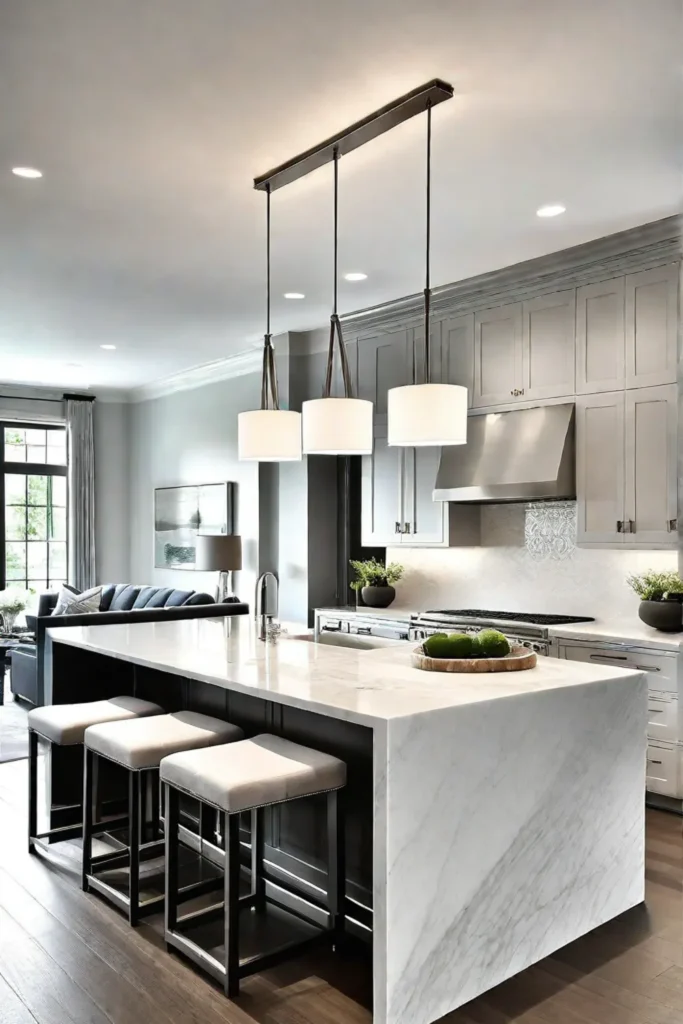
Remember, the human eye perceives different color temperatures as varying warmth or coolness levels, so choose your light bulbs wisely. Proper lighting enhances food presentation and makes colors appear more vibrant, elevating your culinary creations.
When choosing the right lighting for your kitchen table, consider the ceiling height and the overall layout. Higher ceilings may require taller pendant lights or adjustable track lighting to ensure adequate illumination. And don’t forget about energy efficiency – LED bulbs are a great eco-friendly option that can save you money on utility bills in the long run.
The key takeaways? Identify the primary functions of your kitchen table area and consider the desired atmosphere and mood you want to create. You can transform your kitchen into a warm, inviting, and highly functional space with the right combination of task, ambient, and accent lighting.
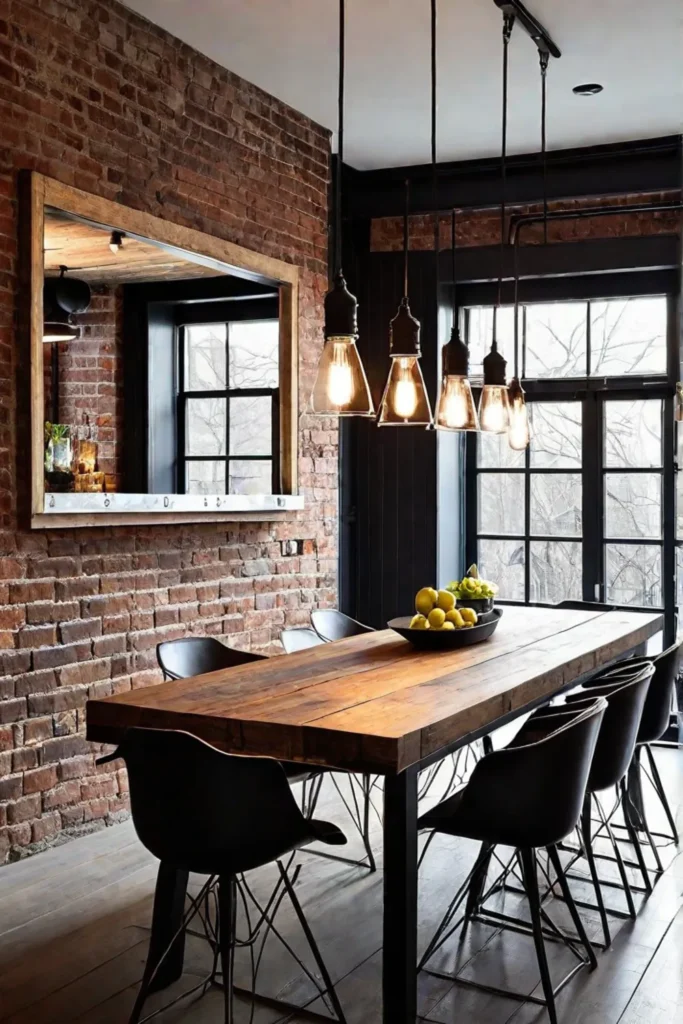
Speaking of lighting options, let’s explore the various fixtures and styles available for illuminating your kitchen table area in the next section.
Exploring Lighting Options for Kitchen Tables
As an expert in home decor, I firmly believe that lighting can transform a kitchen table from a functional surface into a warm and inviting gathering spot. With so many options available, how do you choose the perfect fixture? Let’s dive into kitchen table lighting and discover the ideal solution for your needs.
Pendant Lights: A Popular Choice for Focused Illumination
Pendant lights are a classic choice for illuminating kitchen tables. These suspended fixtures come in a wide range of materials, from glass and metal to fabric and wood, allowing you to complement your kitchen’s aesthetic perfectly. Not only do they add visual interest, but they also provide focused task lighting right where you need it most. Hang them at an appropriate height above the table to create a cozy and well-lit dining experience.
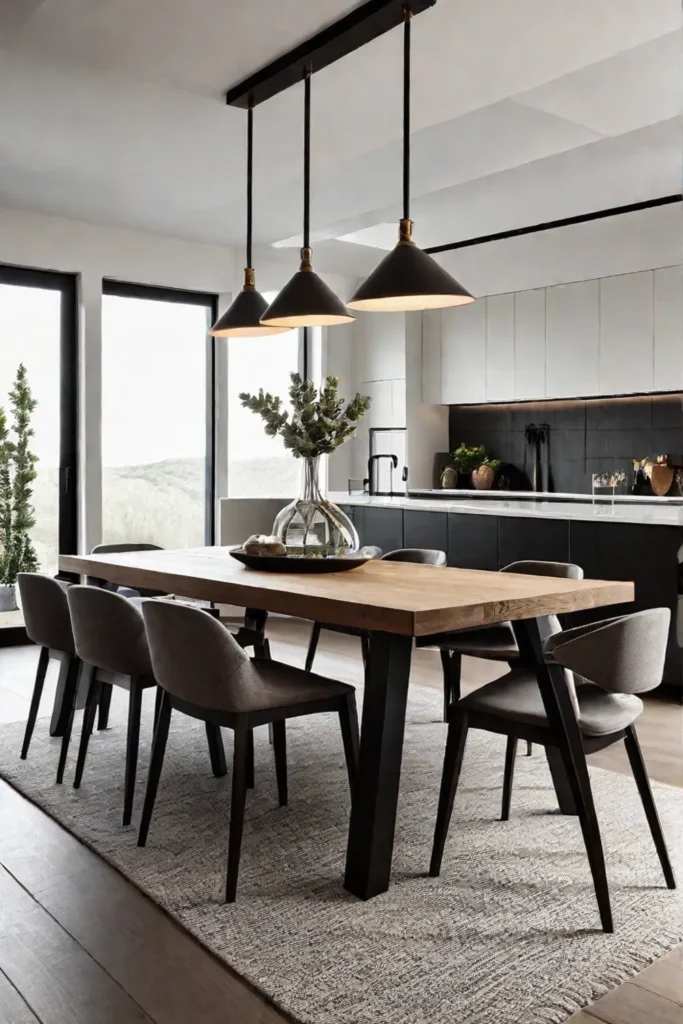
Chandeliers: Adding Elegance and Grandeur
If you’re looking to make a bold statement, consider a chandelier. These opulent fixtures can serve as the focal point of your kitchen, adding a touch of elegance and grandeur to the space. Chandeliers offer various styles, from traditional crystal designs to more modern and minimalist interpretations. Just be sure to select one that complements your kitchen’s overall scale and style.
Linear Suspensions: Modern and Versatile Lighting Solutions
For those seeking a sleek and contemporary look, linear suspensions are an excellent choice. These elongated fixtures illuminate long dining tables or kitchen islands, providing even and ample lighting. With their clean lines and minimalist design, linear suspensions can create a sense of sophistication and modernity in your kitchen.
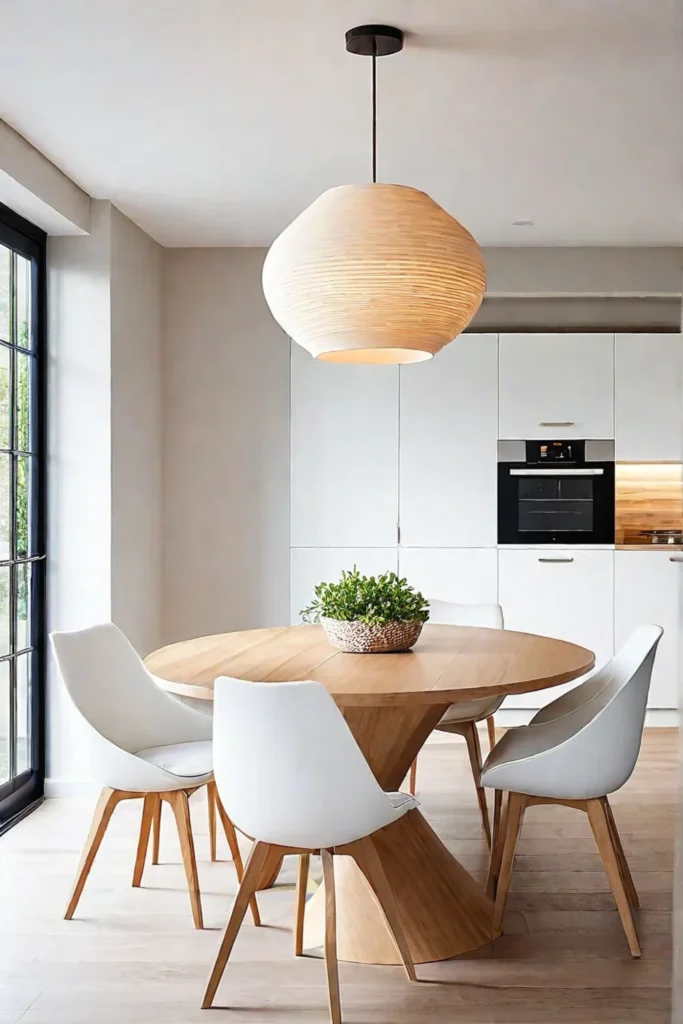
Flush Mount or Semi-Flush Mount Fixtures: Space-Saving Options
If you’re working with limited ceiling height or prefer a more understated lighting solution, flush-mount or semi-flush-mount fixtures might be the way to go. These space-saving options hug the ceiling, providing ample illumination without obstructing the room’s visual flow. They come in various styles, from classic to contemporary, ensuring you can find one that complements your kitchen’s design.
Different fixture materials and finishes can significantly impact light diffusion. For example, glass and metal fixtures create a more focused and direct light, while fabric or frosted glass shades offer a softer, more diffused glow. As for the latest trends, we’re seeing a rise in industrial-inspired designs, incorporating materials like exposed bulbs, metal cages, and vintage-inspired finishes.
Remember, the key is to select lighting fixtures that align with your style and preferences and provide adequate illumination for the table area. You can create a warm and inviting atmosphere that encourages conversation and connection with the right combination of fixtures.
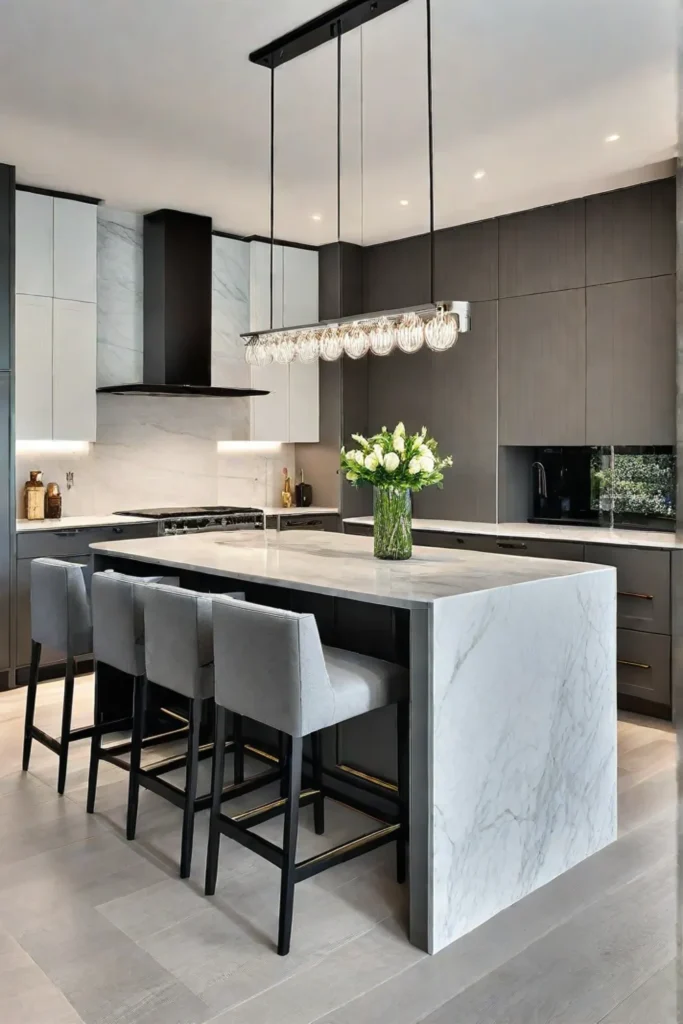
What sets the mood better than the perfect lighting? While selecting the right fixtures is crucial, layering different types of lighting can take your kitchen table ambiance to the next level.
Mastering the Art of Layering Kitchen Table Lighting
Have you ever walked into a beautifully lit kitchen and felt an instant sense of warmth and coziness? That’s the magic of layered lighting! As an expert in home decor, I can’t emphasize enough the importance of combining different types of lighting to create a well-balanced and visually appealing space.
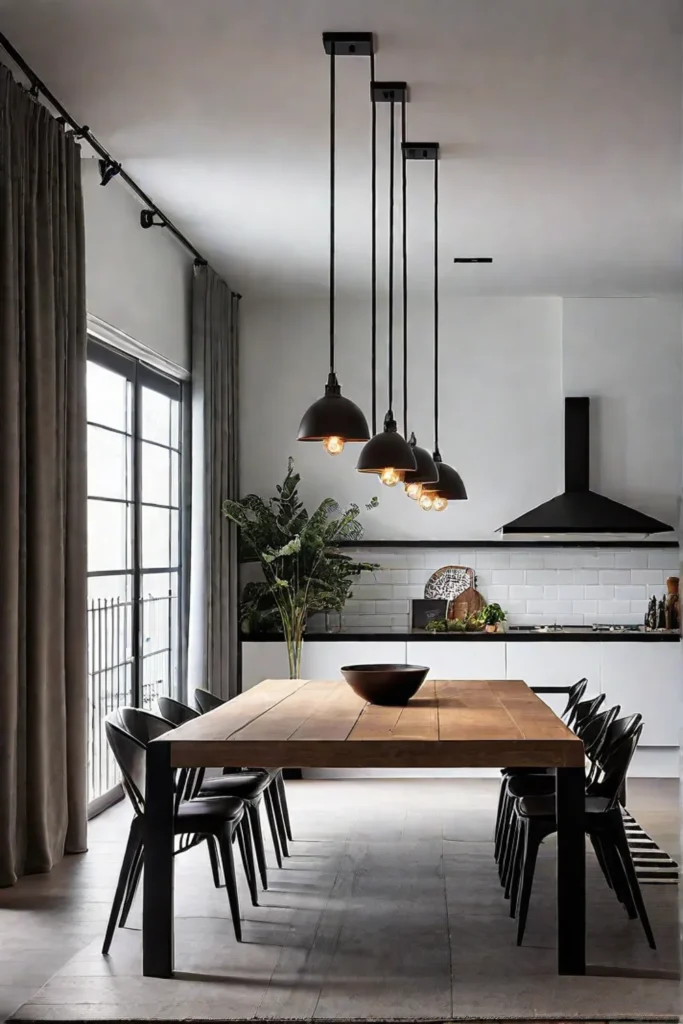
Combining Pendant Lights with Recessed Lighting
Imagine your kitchen table as the centerpiece of the room, where you gather with loved ones for meals and conversations. To achieve the perfect ambiance, consider pairing stylish pendant lights directly over the table with recessed lighting strategically placed throughout the ceiling. This dynamic duo provides focused task lighting for meal prep or homework sessions and ambient illumination for a welcoming, inviting atmosphere.
Incorporating Dimmer Switches for Flexibility
One key to mastering layered lighting is flexibility. Installing dimmer switches for your pendant lights and recessed lighting gives you complete control over the brightness levels. With a simple adjustment, you can set the mood for a romantic candlelit dinner or a lively family gathering. Plus, dimmer switches offer energy-saving benefits, allowing you to reduce your carbon footprint while creating the perfect atmosphere.
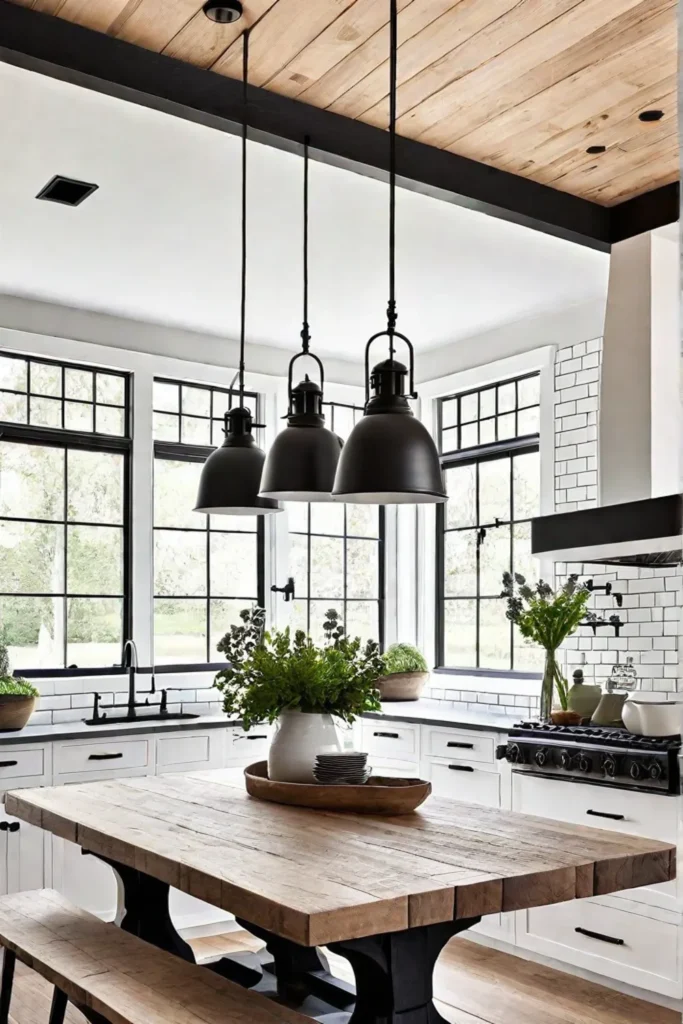
Utilizing Accent Lighting to Highlight Specific Areas
Now, let’s add a touch of drama to your kitchen table setting. Accent lighting is the secret weapon for drawing attention to decorative elements or creating a focal point. Consider installing track lights or wall sconces to highlight beautiful artwork or a bar area. This strategic use of accent lighting can elevate the overall ambiance and add depth and dimension to your space.
Layering lighting is an art form, and like any masterpiece, it requires a delicate balance of different elements. Combining task, ambient, and accent lighting allows you to create a dynamic and inviting atmosphere that caters to your needs and personal style.
How can layering lighting enhance the functionality of a kitchen table? By strategically placing different types of lighting, you can ensure adequate illumination for various tasks, from meal preparation to homework sessions, while also creating a warm and inviting ambiance for gatherings and entertaining.
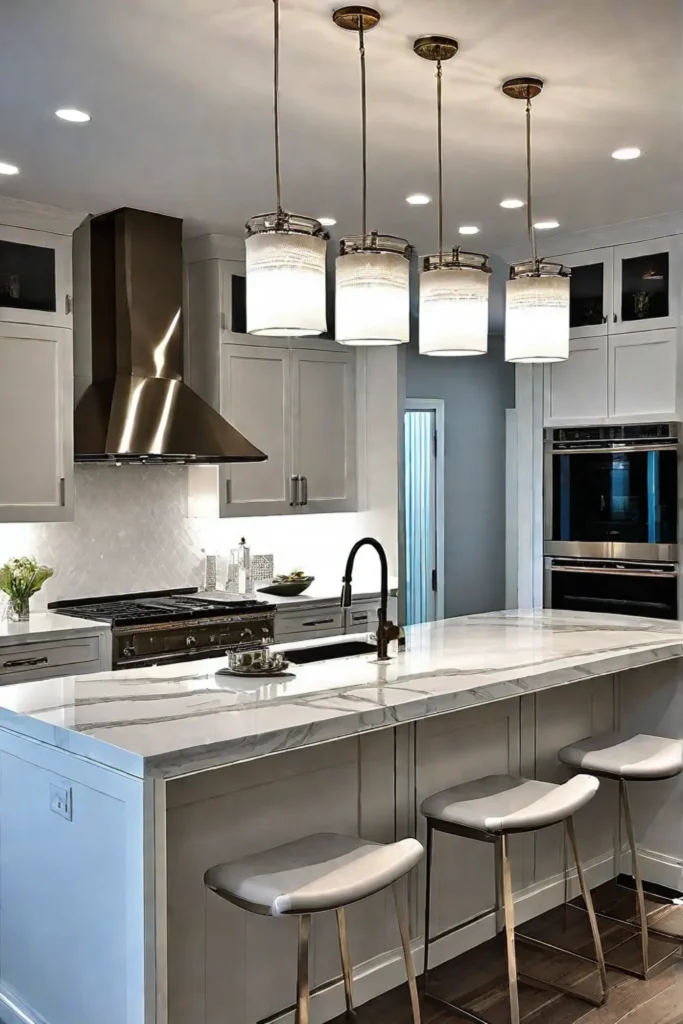
What are the best practices for balancing different lighting sources? The key is to strike a harmonious balance between task, ambient, and accent lighting. Experiment with each light source’s placement, intensity, and color temperature to achieve the desired effect. Remember, light and shadow can create depth and dimension, adding visual interest to your space.
Layering lighting is an art form that requires experimentation and a keen eye for detail. So, embrace your inner designer and have fun exploring different combinations to create a kitchen table setting that perfectly reflects your style and needs.
The next section, “Fine-Tuning Your Kitchen Table Lighting,” will delve into the finer details of optimizing your lighting setup, ensuring that every element works together seamlessly to create a truly captivating and functional space.
Fine-Tuning Your Kitchen Table Lighting
Have you ever noticed how the right lighting can transform the entire mood and ambiance of a space? Regarding your kitchen table area, the lighting you choose plays a crucial role in setting the tone for everything from casual family meals to intimate dinner parties.
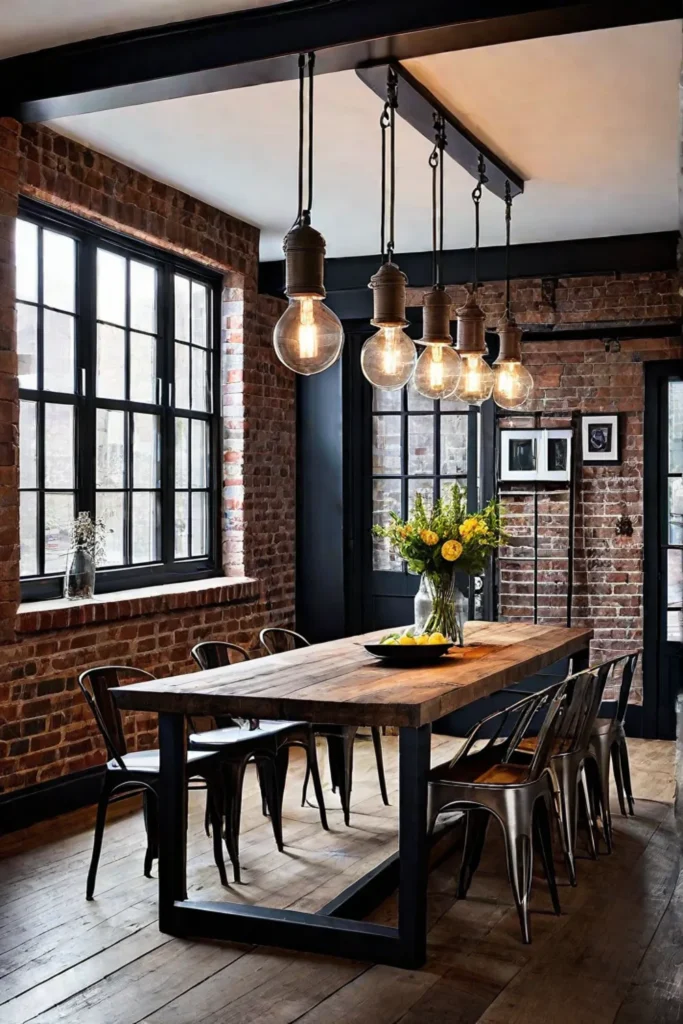
Understanding Color Temperature: Warm vs. Cool
Color temperature is a game-changer when it comes to creating the perfect atmosphere. Warm white light, ranging from 2700K to 3000K, emits a cozy and inviting glow, making it ideal for relaxing and intimate dining experiences. On the other hand, cool white light, typically between 4000K and 5000K, promotes alertness and focus, making it a great choice for task lighting or study areas.
Selecting the Right Brightness Levels
Brightness levels, measured in lumens, can significantly impact the overall ambiance of your kitchen table area. Higher lumens equate to brighter light output, while lower lumens create a softer, more subdued atmosphere. Consider the size of your space and the desired illumination level when selecting the appropriate brightness levels for your kitchen table lighting.
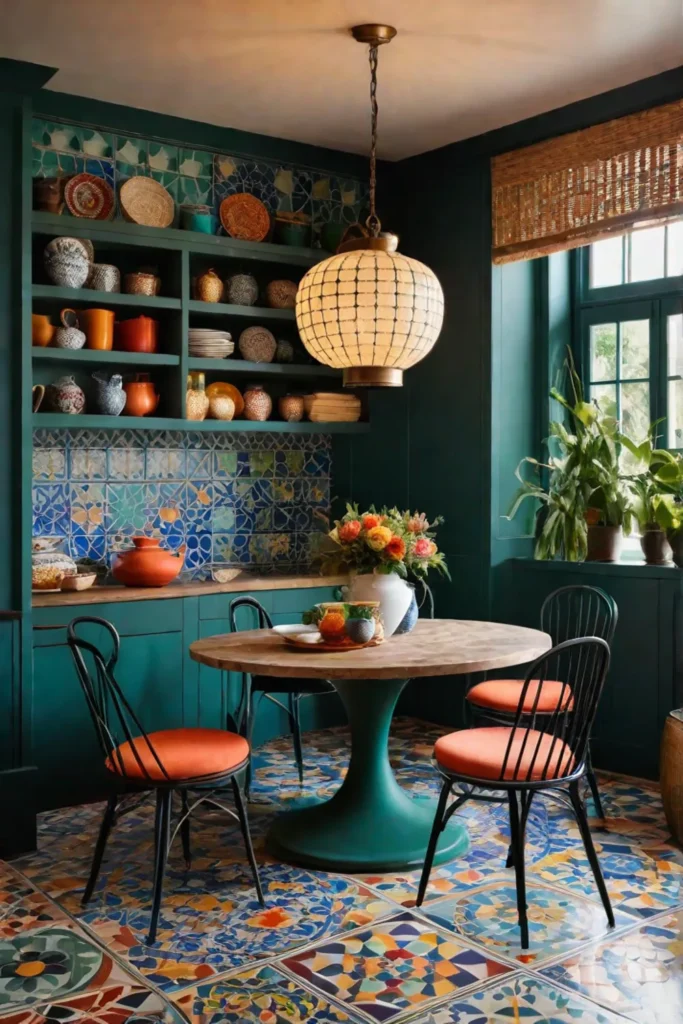
Choosing Energy-Efficient LED Bulbs
LED bulbs are a game-changer regarding energy efficiency, longevity, and versatility. They last significantly longer than traditional bulbs and offer a wide range of color temperature options, making it easy to find the perfect match for your desired ambiance. Plus, with their energy-saving capabilities, you can enjoy beautiful lighting without breaking the bank on your utility bills.
Adjusting the color temperature and brightness levels of your kitchen table lighting is an art form that can truly elevate your dining experience. By selecting the right bulbs and fine-tuning the settings, you can create a space that perfectly reflects your mood and needs.
How does the right lighting affect your mood and productivity in the kitchen table area? Warm tones can create a cozy, relaxing atmosphere, while cool tones can help you stay focused and energized for tasks like meal prep or homework.
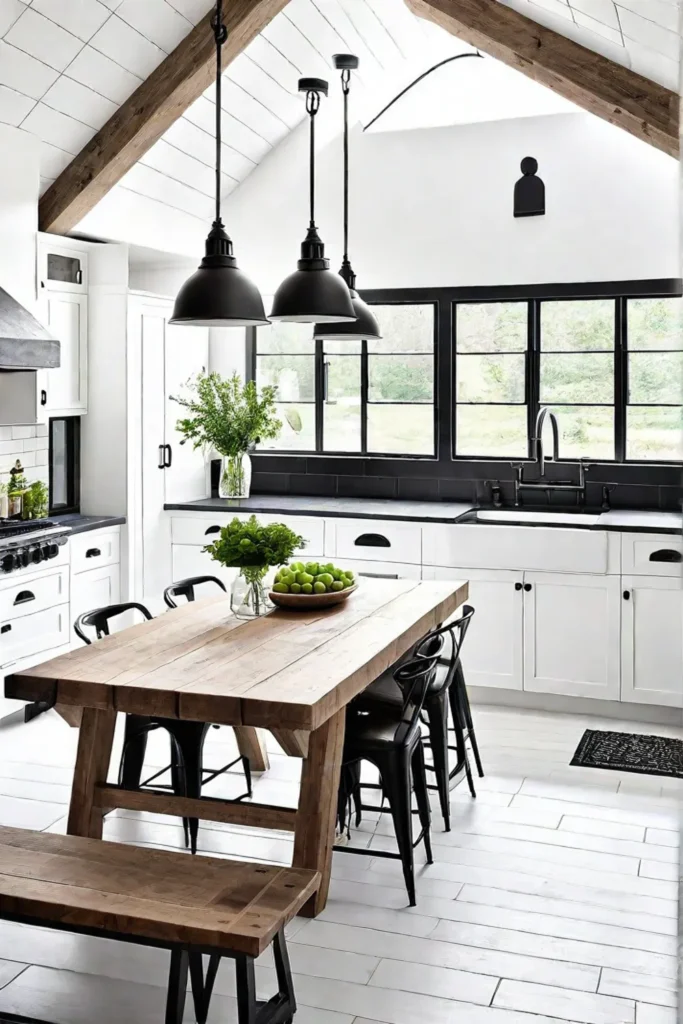
Conclusion
My dear friends, as we bid farewell to our exploration of kitchen table lighting, I hope you feel inspired to elevate your culinary spaces with the perfect blend of task, ambient, and accent illumination. Remember, lighting is not merely a functional necessity but a powerful tool that can shape the very essence of a room, imbuing it with warmth, elegance, and a touch of Southern hospitality.
Embrace the art of layering, experiment with color temperatures and brightness levels, and let your style shine through in every thoughtfully curated fixture and setting. Whether you opt for a chandelier’s timeless charm or a linear suspension’s modern allure, the key is to create a harmonious interplay of light and shadow that invites conversation, connection, and cherished moments around your kitchen table.
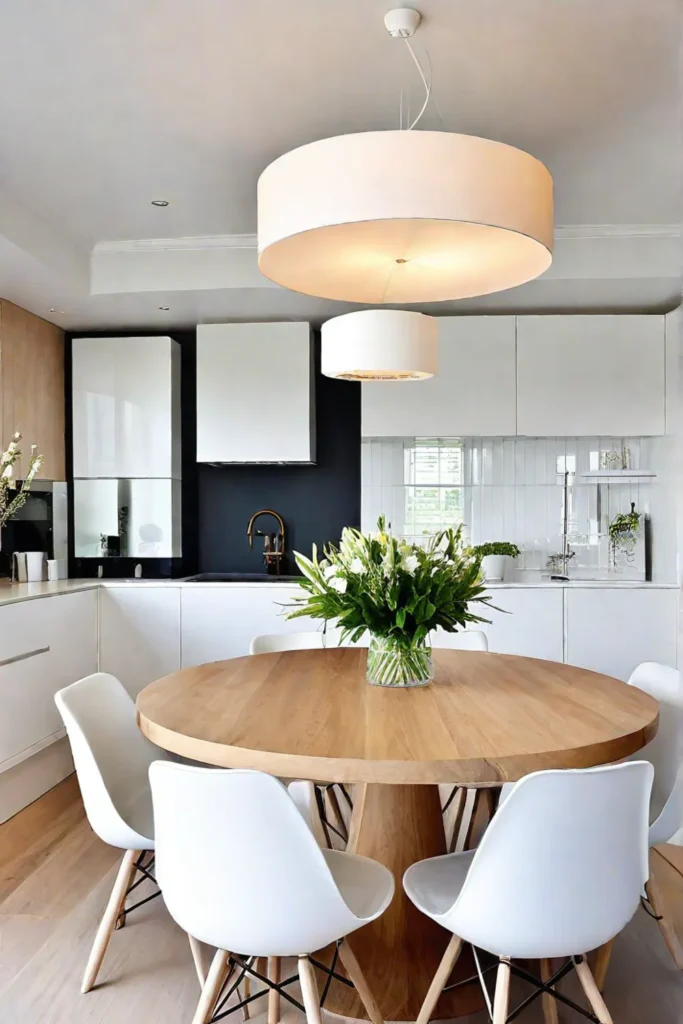
So, go forth, my darlings, and let your spaces reflect your gracious spirit and impeccable taste. In the warm glow of perfectly orchestrated lighting, every meal and gathering will become a celebration of life’s simple pleasures and the enduring bonds that truly matter.
